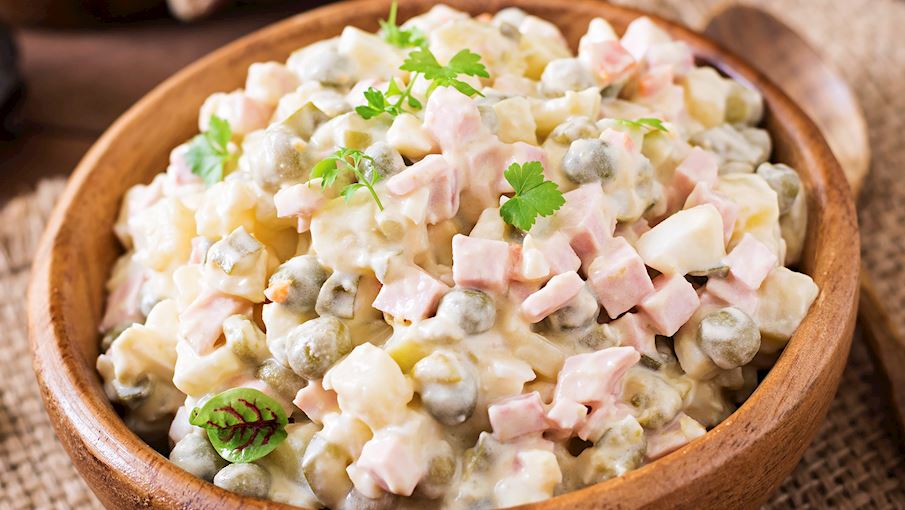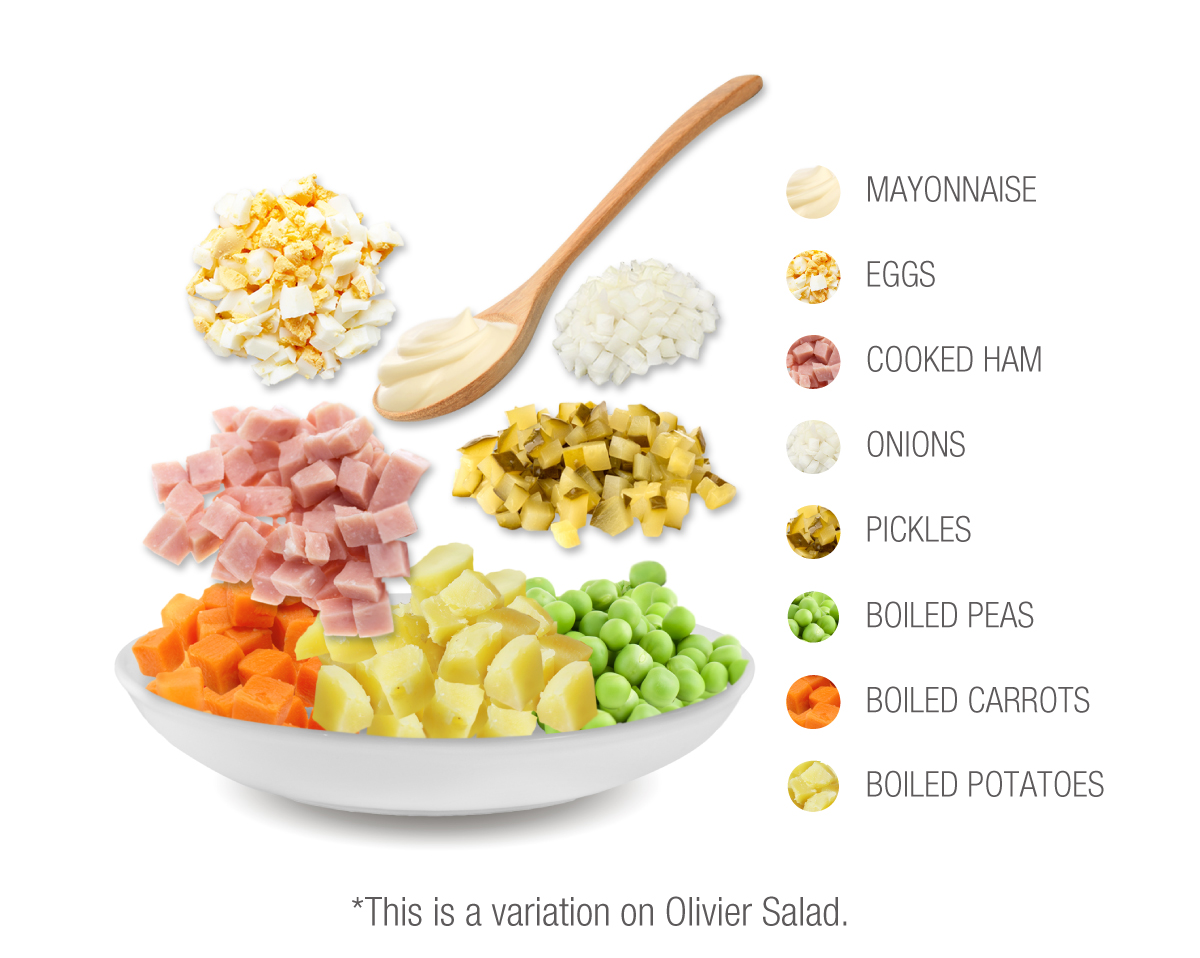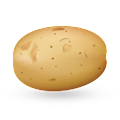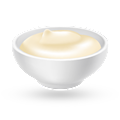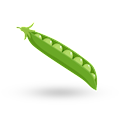Olivier salad is a Russian salad with variable ingredients, but it is typically made with chopped vegetables, meat, and mayonnaise. The key ingredients include diced potatoes, vegetables, eggs, chicken, or ham. This salad is one of the most important appetizers at the New Year's salad buffets in Russia, as well as in some of the other countries of the former USSR.
The original was invented in the 1860s by Lucien Olivier, a chef in the popular Moscow restaurant called L'Hermitage. Olivier guarded the recipe until he died, but it is believed that the recipe was stolen by an employee who watched the chef at work, so the salad is still made today.
MOST ICONIC Olivier Salad
View moreMAIN INGREDIENTS
Originally invented in the 19th century, vinegret is the oldest, extremely popular Russian salad usually consisting of boiled beets, potatoes, and carrots combined with diced pickles, sauerkraut, and onions. The name of the salad is derived from the French term vinaigrette, which denotes an oily salad dressing in France.
Vinegret is traditionally dressed with a combination of oil, vinegar or lemon juice, and sometimes mustard. It is often prepared for holidays and on festive events such as New Year's celebrations, so it is recommended to make it a day in advance. Customarily, the salad is served with Russian black bread on the side, along with meat or fish such as sausages or herrings.
MOST ICONIC Vinegret
View moreShuba or herring under a fur coat is a unique Russian salad consisting of three distinctive layers: salted herring, potatoes, and beets. The salad often has more than three layers, mostly consisting of apples, onions, or hard-boiled eggs.
Most people believe that it was invented by a tavern owner named Anastas Bogomilov at the beginning of the 20th century. The red color of the beets symbolizes the red flag, and potatoes symbolize the staple food of peasants and workers. Today, the salad is a well-known staple at Russian New Year celebrations.
Mimoza is a traditional salad. It's prepared by layering different ingredients, and each one is separated by a light layer of mayonnaise. The ingredients include canned and mashed fish such as tuna, mackerel, salmon, or trout, boiled egg whites and yolks, onions, crumbled cheese, and sometimes boiled potatoes and carrots.
Almost all of the ingredients used in the salad are finely grated. The boiled egg yolks are usually the final layer, hence the name of the salad, because it looks similar to the spring flowers. The salad is often garnished with chopped dill before serving.
MAIN INGREDIENTS
Indigirka is a Russian fish salad that has its origins in Yakutia (Sakha). It consists of diced frozen fish that is combined with onions, oil, salt, and pepper. The salad is typically made from whitefish such as broad whitefish (also known as chir), nelma, and muksun, and it is traditionally served in ice bowls.
Indigirka salad first appeared in the middle of the 20th century and was named after the Indigirka River, one of the major Yakutian rivers. It is believed it was created by chef Innokenty Tarbakhov, who based it on a similar ethnic Yakutian dish made with raw fish called raw in the Yakut language or five minutes in Russian.
TasteAtlas food rankings are based on the ratings of the TasteAtlas audience, with a series of mechanisms that recognize real users and that ignore bot, nationalist or local patriotic ratings, and give additional value to the ratings of users that the system recognizes as knowledgeable. For the “Top 5 Russian Salads” list until February 13, 2025, 1,207 ratings were recorded, of which 720 were recognized by the system as legitimate. TasteAtlas Rankings should not be seen as the final global conclusion about food. Their purpose is to promote excellent local foods, instill pride in traditional dishes, and arouse curiosity about dishes you haven’t tried.


